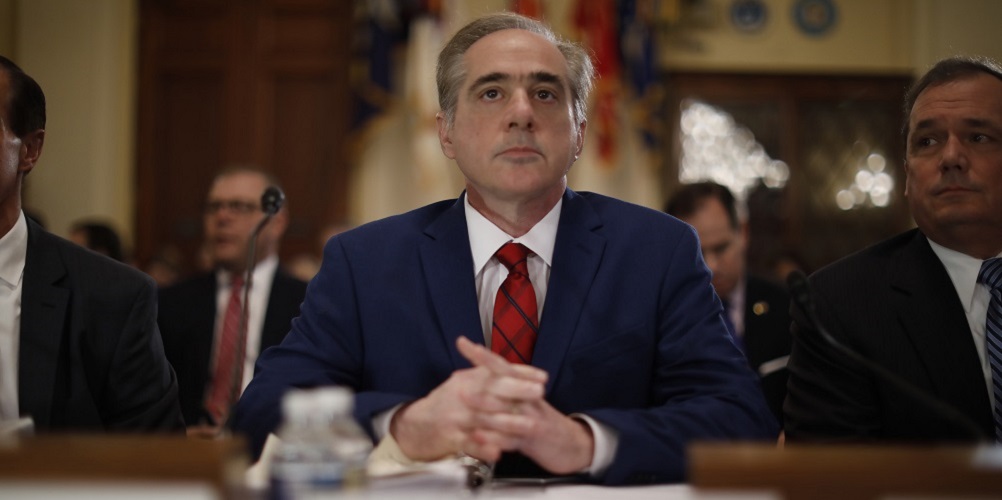The VA needs to do more to protect nurses and doctors during the COVID-19 pandemic
Former Veterans Affairs secretary David Shulkin says that the department isn't doing enough to protect its healthcare workers — and that could have dire consequences as the COVID-19 pandemic continues.

In a war, it’s usually our military that’s under attack. But in this battle against the novel coronavirus (COVID-19), it’s our frontline healthcare workers and first responders that are the casualties.
Too many are getting sick in the line of duty. In Europe reports suggest that approximately 10% of those infected are healthcare workers. The experience in the United States may not be dissimilar.
This was not unexpected. In past pandemics, healthcare workers have similarly taken the brunt of infections. In the 1918 influenza pandemic, nurses in particular saw enormous morbidity and mortality while caring for others. In the 2009 H1N1 virus pandemic, healthcare workers fell sick at high rates as well.
However, despite these past experiences, we may be seeing something even worse occurring within the Department of Veteran Affairs.
The recent death of seven VA healthcare staff from COVID-19 shows just how horrific this situation has become. They join over 1,100 of their colleagues who have become infected with the coronavirus. With more than 3,200 veterans reported to have the virus across the country, infections among VA staff now represent over one fourth of all cases being reported out of VA.
While any staff that were infected while doing their job is too many, this number of infected staff is alarming and a higher ratio than is being seen in most other healthcare settings.
VA staff around the country have been vocal in saying that they aren’t getting the protective equipment they feel they need to be safe. The American Federation of Government Employees, the union for many federal workers in VA, has gone on record to say that too many employees are being asked to work without the proper protection.
The VA Inspector General recently found that many VA medical centers themselves reported concerns over inadequate supplies and medications and shortages of staff such as intensive care unit nurses, environmental service workers, and VA police. Additionally, only 20% of VA medical centers had developed plans to share protective personal equipment if needed with other hospitals in their communities.
Reports also suggested that VA has been unwilling to test their own staff and physicians, as they are not themselves veterans. Not knowing the infection status of those caring for veterans just furthers the risk to veterans and their fellow workers.
The VA is not faced with an easy task. It has the responsibility to care for 9.5 million veterans and at the same time has stepped up in providing help to communities struggling with overwhelming civilian demands. In order to do this, VA staff must be supported in a safe environment to successfully take on these two missions.
Too many VA facilities are already short staffed as nationally there are thousands of vacancies. With these vacancies, workers out sick, and others unable to work for other reasons, those staff that remain are asked to work long hours and with increased workloads. Healthcare professionals that are stressed and overworked make mistakes. In addition, those asked to take on tasks without the proper training put themselves and others at risk. Certainly not having the proper protective equipment puts people in jeopardy as well.
Yet there are solutions. The VA is a large healthcare system and employs more than 320,000 people. It’s a national system that can move equipment and staff from places that are not seeing much demand to those that are. The department can deploy staff from ambulatory settings to assist those caring for veterans in need of acute care. To move people and resources across the country to where they are needed requires an aggressive and deliberate strategy. Given the number of staff that are getting infected, extra training is required. Ensuring that the necessary equipment is readily available must also be a priority.
The VA is up to the task. I’ve seen firsthand the dedication of the incredible men and women that serve in this system. I’ve watched them accomplish amazing things and overcome incredible obstacles. But it will take strong leadership and experienced management to ensure that the mission is done properly.
Just as our military deserves the best protection possible when they enter battle, so do healthcare professionals and first responders. Our heroic VA healthcare professionals must have enough help and the right equipment to ensure that their facilities are properly run and they are safe to care for our country’s heroes.